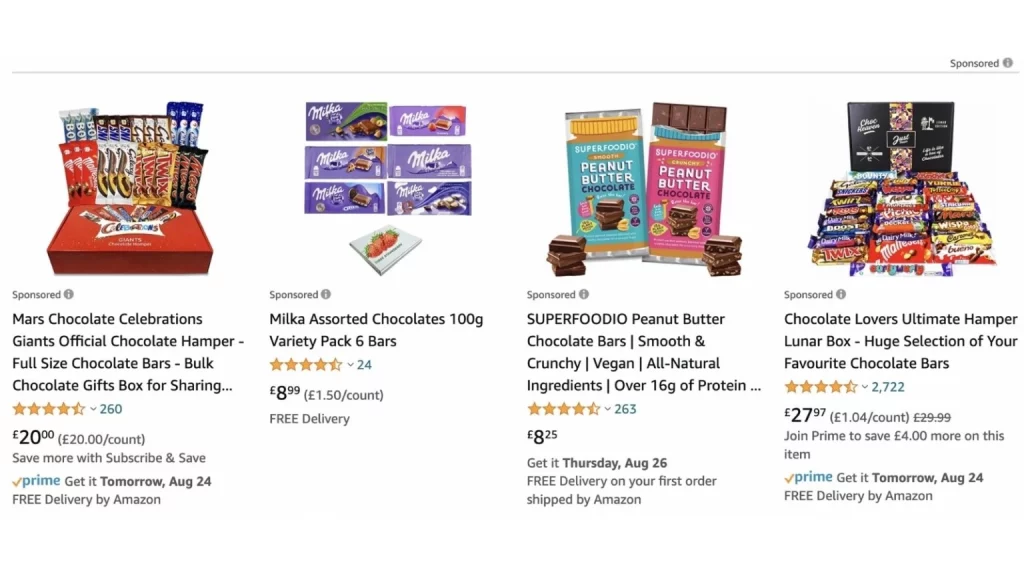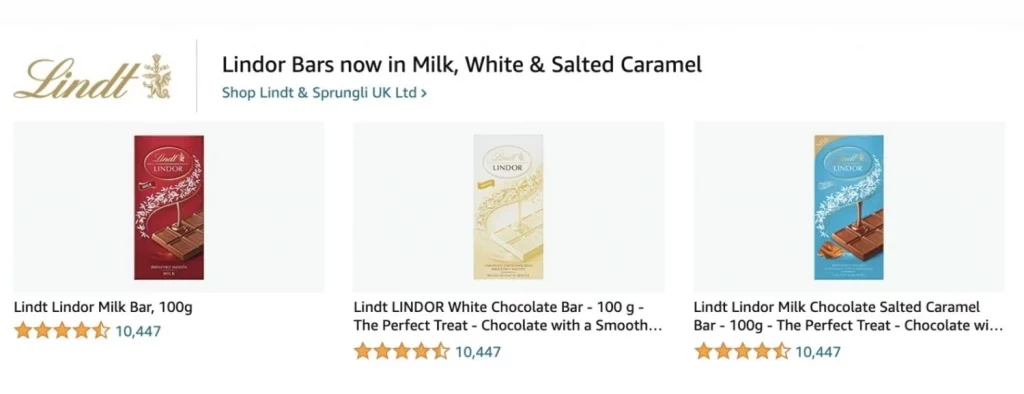By Chris Bergin
Most marketers by now are pretty familiar with Google, Bing and social media ads – but we often see clients who aren’t so well-versed in Amazon Ads. As one of the biggest shopping platforms in the world, you can’t afford to ignore the opportunities here.
Just like with any advertising platform – digital or otherwise – Amazon has its own unique set of features. We’re going to give you a whistle-stop tour of the platform so you know where the opportunities are for your products.
What makes Amazon an attractive advertising platform?
Aside from the fact that millions of people shop on Amazon everyday, here are some reasons why you should start thinking about advertising on Amazon.
1. You only pay for clicks
No matter which campaign type you are using, you will only be paying for clicks on your ads – which you can also set the bids for. That makes budgeting and monitoring spend that much easier.
2. You can target specific keywords and products (including your competitors’!)
Just like Google Ads, on Amazon you can target using keywords based on 3 match types – Exact, Phrase and Broad – so you can show ads to customers based on their search terms. In addition to keyword targeting, you can also target by product, brand or category to capture your target audience.
3. Customers are in the mindset to buy
Amazon has nailed virtually everything shoppers want. Convenience, speed, reliability. So when consumers are browsing Amazon, they’re in the mood to buy something – that’s unlike virtually all other platforms, where other content competes for attention. On Amazon, it’s products alone. So if you’re using platforms like Google Shopping, you should be considering Amazon too.
Types of ads on Amazon
Sponsored Product Ads
These ads will appear within the search result list as individual products, looking pretty much exactly like Amazon’s organic listings. So, if you were to search for ‘chocolate bars’ you’d immediately see sponsored product ads within the top results. It’s a good way to show above and within the non-advertised (organic) listings – although note that placement will highly depend on how much you choose to bid on the keywords or products you are targeting.

Sponsored Brand Ads
You can also find these when searching for products on Amazon. They appear as a banner above the standard listings within the search results.
Here you can showcase multiple products, your logo, custom headline text and links to your Amazon Store (vendors only). Other variations of this ad can include having a video asset for a particular product. This is a great way to increase brand awareness, showing off a range of products. It’s also a really great way to launch a new product on Amazon.

Sponsored Display Ads
Similar to how Google Display ads works, you can remarket display ads to potential customers who have viewed your product but not purchased on and off Amazon. You can also use Amazon’s audience list to create brand awareness and consideration campaigns.
Amazon will dynamically create these banner ads – all you have to do is choose which products you want to promote and who you want the ads shown to. So it’s a really nice, straightforward process and a great way to get those potential buyers over the line!

What’s the difference between an Amazon Seller and a Vendor?
Whether you are an Amazon Seller or Vendor, you should have access to all the ad types we’ve covered, as long as you’ve registered your brand.
Amazon Vendors is an invite-only group. There are no listed requirements that we’re aware of on how to become an Amazon Vendor. We reckon the secret is to have an established brand on and off Amazon as well as producing a consistently healthy amount of sales to grab Amazon’s attention. By being a Vendor Amazon will buy stock off you and distribute it themselves when a sale is made on Amazon.
Amazon Store
Whether you are a Seller registered on the Amazon Brand Registry or a Vendor, you can set up your own store that is hosted on Amazon. Here you can elaborate on your brand story and include your product range for new and existing customers to discover.
Customers can navigate to your store organically or through Sponsored Brand ads. By linking your store to your Sponsored Brand ads you can see a 17% better return on your ad spend as compared to linking to a product list page (source: Amazon internal study, 2019), so it’s well worth doing.
Anything else to be aware of?
Ad Scheduling
Currently, Amazon campaign management lacks several handy features when compared to advertising on Google. One feature asked after by clients is about ad scheduling.
At the moment, ad scheduling is not a feature (and may never be as machine learning is becoming the new norm). This means your ads will show throughout the whole day as long as you have enough budget. If your budget runs out at midday, your ads will not generate any more impressions unless the budget for that campaign is increased.
Fortunately there is a way to avoid this issue by creating budget rules for specific days, dates, or events. So if the weekend is usually a busier period for your brand, you can set rules to increase budget by x%. The same goes for any particular dates, or around events such as Black Friday or Prime Day.
Conclusion
So, if you’re in the business of ecommerce and aren’t yet on Amazon, we’d highly recommend giving it a go. We’re now an Amazon Advertising partner, so if you want someone to get you up and running, we can help – talk to us today.

